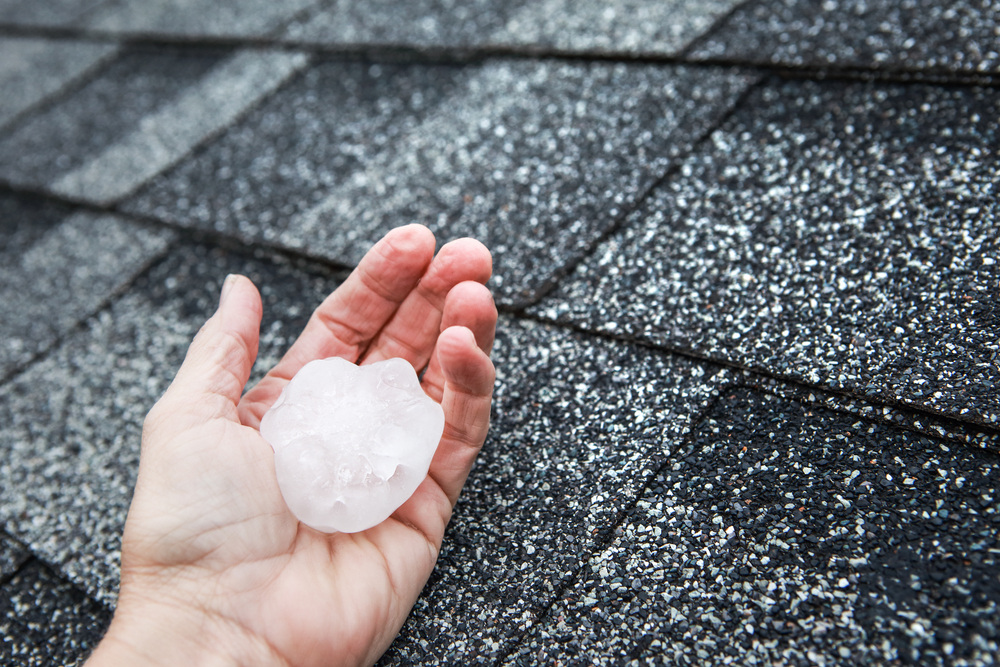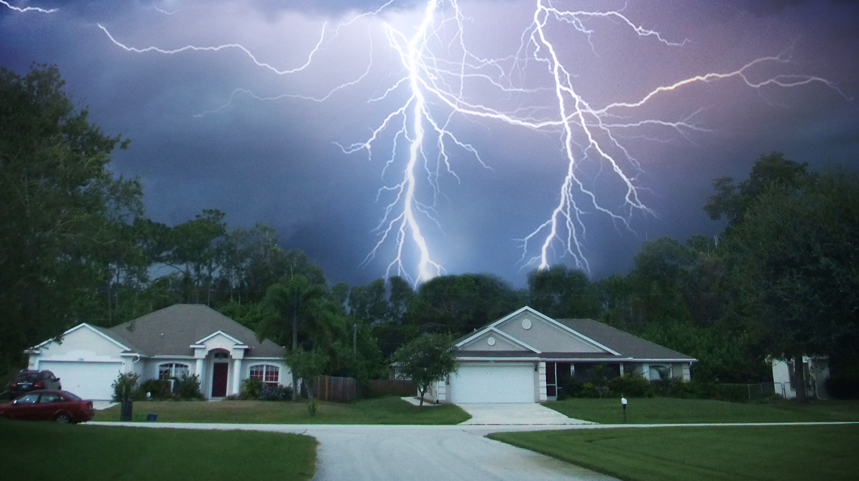
When it comes to severe weather, hailstorms can wreak havoc on roofs, leaving behind costly damage if not detected and …

Draftiness becomes particularly bothersome with the onset of winter. Whether it’s doors, windows, baseboards – or even electrical outlets – cold air can’t wait to infiltrate your home through these oftentimes defenseless pathways.
Mother nature is really good at impacting once airtight seals, with changes in temperature and humidity doing a number on old wooden windows and doors. If you look at an exterior door from inside your home and see daylight sneaking in around it, you’ve got a draft problem.
The ultimate solution to avoid your home’s draftiness is to move to a Caribbean island. But, if that’s not looking like a real possibility, consider these other solutions.
Perhaps you’ve done this before. Done properly, weatherstripping is an excellent, low cost solution to blocking drafts. It’s essentially a strip of insulation you put around your windows and doors to cover up any gaps.

Hey, anything that makes you feel comfortable, like a warm blanket on a cold winter’s night, may do the trick on windows, too.
Heavy thick curtains can provide great draft protection. It’s recommended to open your curtains during the day to let sunshine warm your home, and then close them at night to keep cold air drafts at bay. This article reveals some excellent benefits thermal curtains offer and tips on how to choose them.
The bottoms of doors are notorious for letting air travel to and fro. An easy and inexpensive way to put a stop to this airflow is by installing a bottom door draft stopper. You can easily buy one online, or if you’re feeling creative (and have a few pool noodles laying around), you can make one for yourself as you can see in this video:
Okay, now that we have you in the DIY mood, here’s a way to weatherize your windows (again, inexpensively) with plastic film insulation, bubble wrap, and double-sided tape. Oh, and a hair dryer.
Well, let’s not give windows and doors all the credit for leaving your home open to the elements. Baseboards and trim offer their share of draftiness. You’ll find these areas typically more of a problem in older homes. According to The Craftsman Blog:
In old houses the original baseboards and trim were often installed first and then the plasterer would come in and plaster up to them. This means that behind your trim there is nothing but empty space which makes a great place for drafts to start.
How to fix this? Use caulk to seal joints in the boards and gaps between the trim and plaster.
Wherever plumbing and electrical enters and exits your home’s exterior, you’re very likely to find gaps. Not only cold air likes to come in this way. So do pests. We guess insects get cold, too. PrettyHandyGirl.com offers some great tips on how to handle this issue using foam gap sealant.

According to AGoodlyHome.com, gaps around electrical boxes on exterior walls and ceilings are a much great source of draft than you might imagine. That’s where your foam gap sealant, caulking, or even child-proof safety plugs come in.
Now’s the time to start thinking about closing the gaps on letting your home turn into an unintended winter wonderland. We hope these tips help you have a safe and comfortable winter.

When it comes to severe weather, hailstorms can wreak havoc on roofs, leaving behind costly damage if not detected and …

It’s important to know how lightning can impact your home both negatively and positively. Let’s shed a little light on the possibilities… …

But there’s always a great way to cure those post-holiday blues by putting yourself and/or your family to work with …

1. The Solar Energy Market is booming According to the Solar Energies Industry Association, solar energy is off-the-charts popular with residential …

What to Look For First, you might find warning signs of structural damage in the interior of your home. In addition to …

We know you do not want to deal with those lengthy phone calls, the hassle of finding a contractor and …